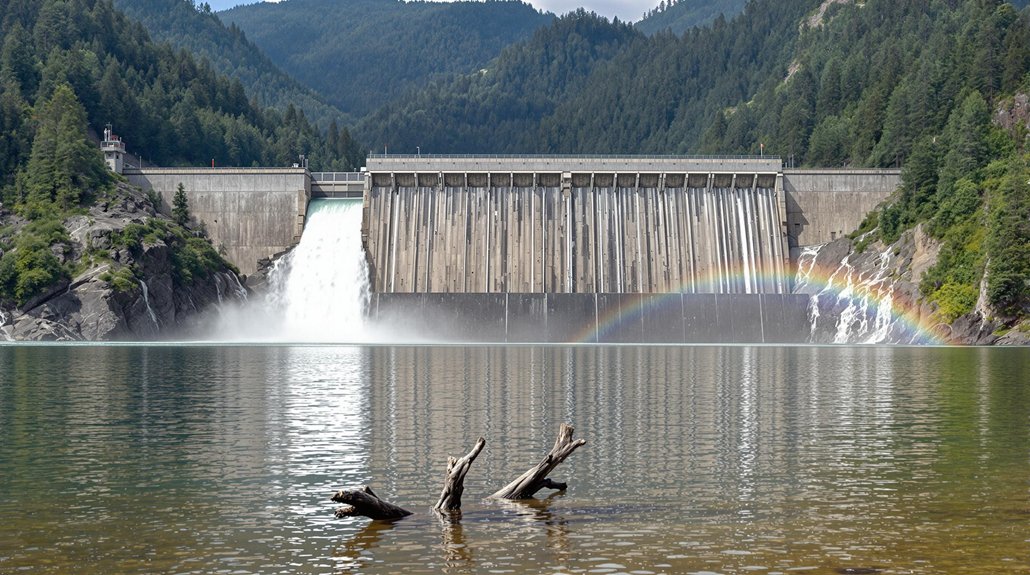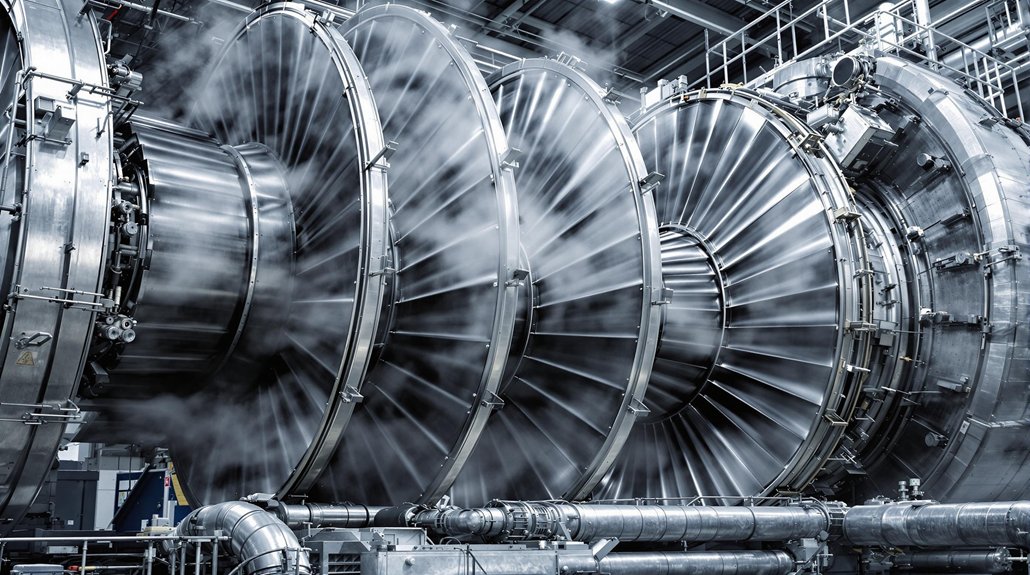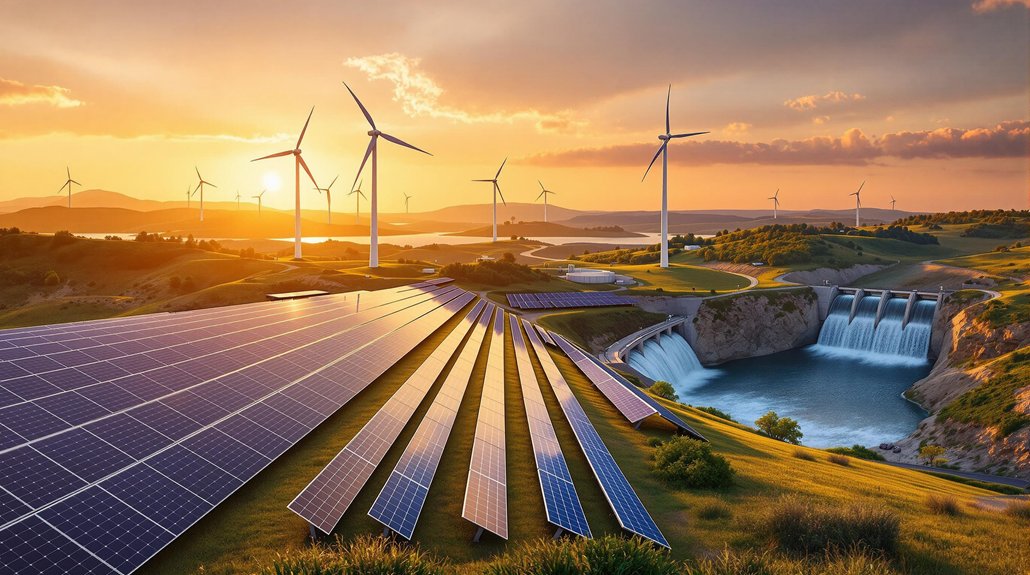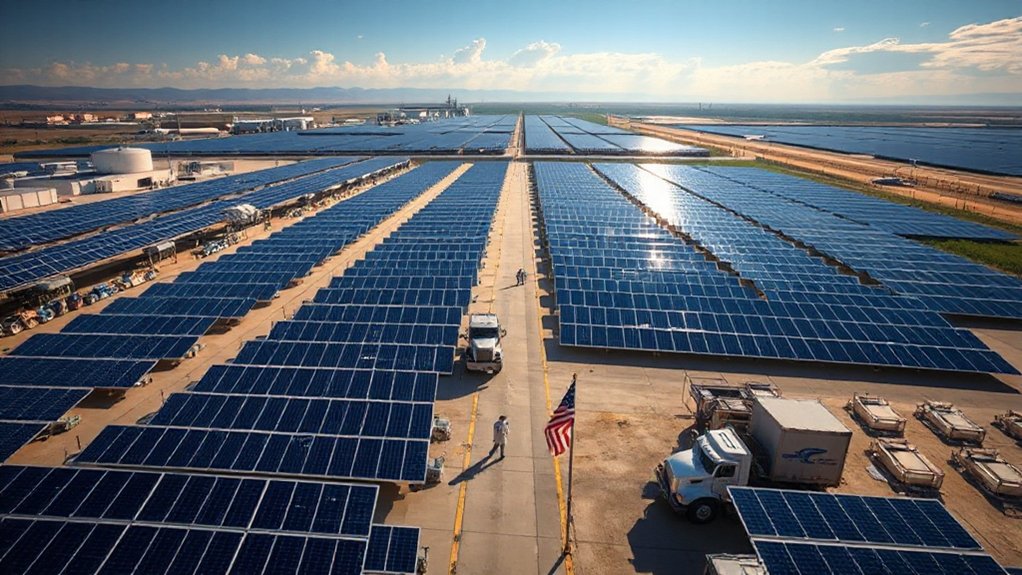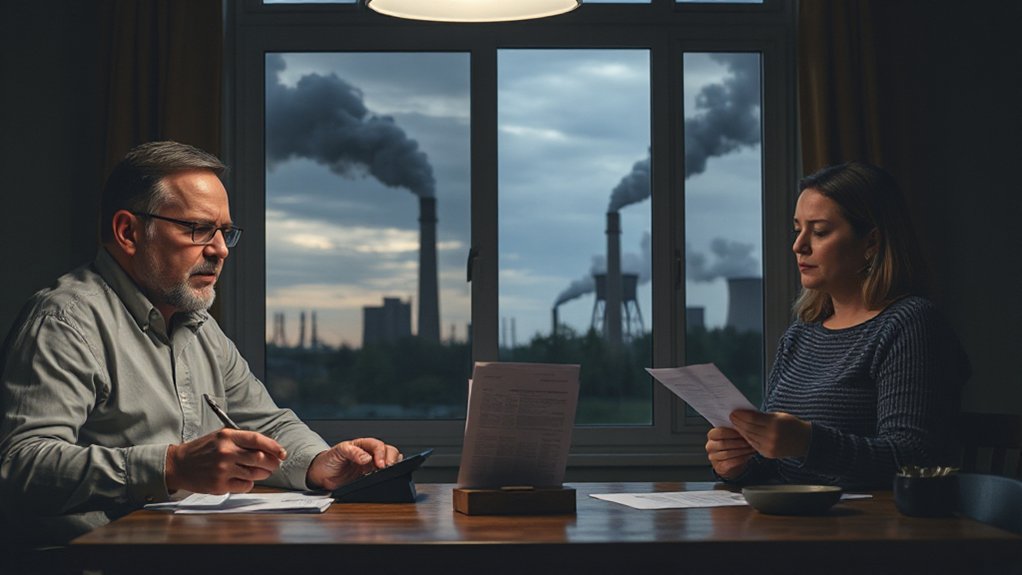Hydroelectric energy’s sustainability status is complicated – really complicated. While it produces zero-carbon electricity and can run for a century, dams flood valleys, disrupt ecosystems, and force communities to relocate. Sure, it’s reliable and cost-effective, but those massive reservoirs belch methane and mess with fish migration. Modern innovations like fish-friendly turbines help, but the debate rages on. The full story of hydropower’s green credentials requires a deeper understanding of its mixed impact.

How sustainable can a power source really be when it requires flooding entire valleys and disrupting river ecosystems? Hydroelectric dams are the clean energy darling that comes with a dirty little secret: they’re complicated. Sure, they produce zero direct carbon emissions during operation and provide a whopping 16% of global electricity. But let’s talk about those flooded valleys and displaced communities, shall we?
Hydropower may be clean on paper, but flooding valleys and displacing communities reveal the messy reality of this renewable darling.
Here’s the thing: hydropower is both hero and villain in the sustainability story. These massive concrete structures can operate for 50-100 years, churning out reliable electricity with minimal operational costs. They’re basically giant batteries, storing energy and responding to grid demands faster than you can say “blackout.” Pumped storage facilities are particularly effective at managing peak energy demands by utilizing two separate reservoirs. The cleaner energy source helps reduce global warming and acid rain compared to fossil fuels.
And when wind and solar power are having an off day? Hydro steps in like a reliable friend. Currently producing 4,210 TWh annually, hydroelectric power dominates the renewable energy landscape.
But environmental impacts? Oh boy. Fish can’t migrate properly, water temperatures get weird, and those peaceful reservoirs are secretly burping methane into the atmosphere. Not exactly Mother Nature’s favorite child. The industry’s trying to clean up its act, though. Fish-friendly turbines are becoming a thing, and there’s this whole push toward smaller, less disruptive projects. Technology’s getting smarter, but rivers are still rivers.
The economics make sense on paper. Low operating costs, long lifespan, multiple benefits like flood control and irrigation. Local communities get jobs, rural areas get developed, and everyone gets electricity.
Except for the folks who had to relocate when their homes became underwater real estate. That’s the part they don’t put in the brochures.
Governments are scrambling to figure out if hydropower deserves a “green” label. Some say yes, others not so much. Meanwhile, these concrete giants keep powering our world, for better or worse.
The truth is, hydroelectric energy’s sustainability isn’t a simple yes or no answer. It’s more like a “yes, but…” with a side of “it’s complicated.” One thing’s certain: as long as rivers flow and electricity demands grow, hydropower isn’t going anywhere.
